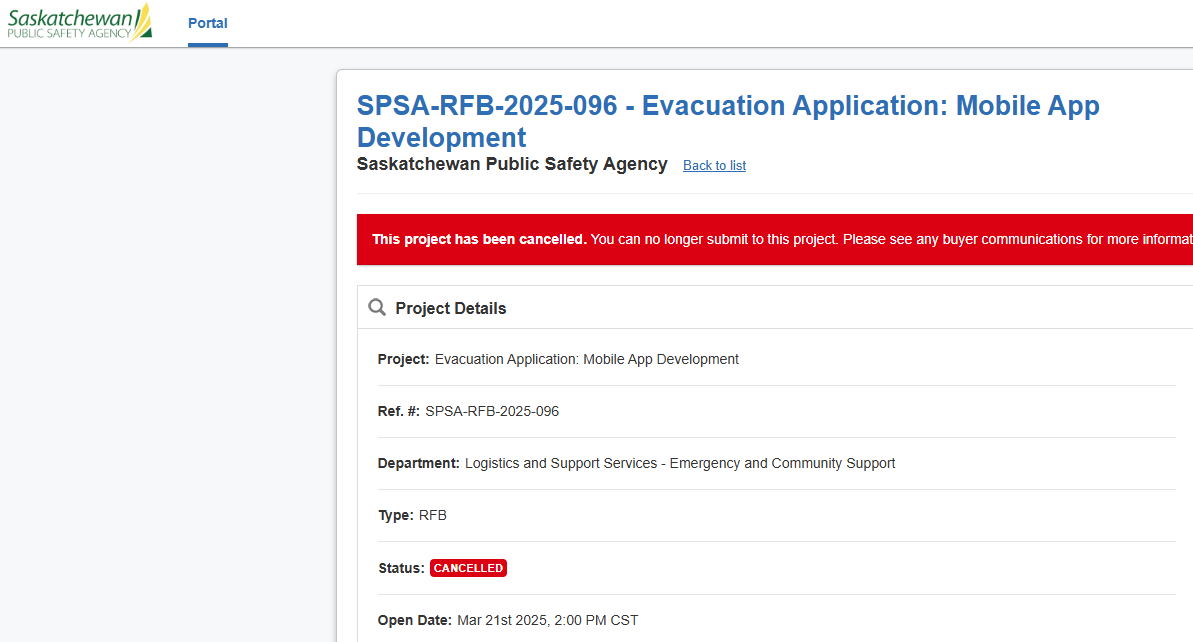
In the midst of wildfire season, province cancelled request for bids to improve evacuation app
In late March, the Saskatchewan Public Safety Agency (SPSA) put out a request for bids (RFB) to develop a mobile app that could be used during evacuations. However, it was cancelled shortly after.
“The RFB process for a mobile app version began prior to wildfire season and was placed on hold in June due to active wildfire response and evacuations taking priority,” the SPSA told paNOW.
The mobile app was meant to supplement the SPSA’s Saskatchewan Evacuation web based application; it would not replace SaskAlert which is the province’s emergency public alerting program.
The RFB project description said the SPSA frequently evacuates residents from disaster communities, but their reaction time can be delayed by outdated methods and systems which are mainly manual in nature.



